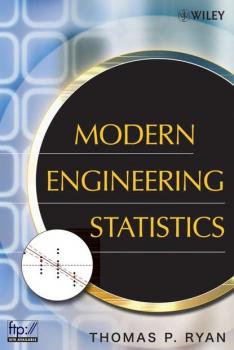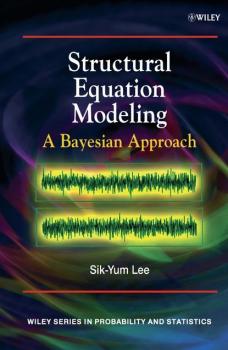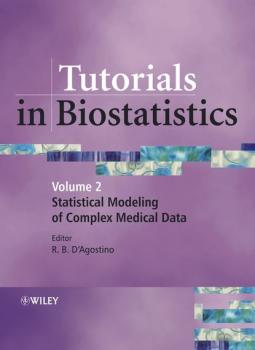Математика
Различные книги в жанре МатематикаMathematical Asset Management
A practical approach to the mathematical tools needed to increase portfolio growth, learn successful trading strategies, and manage the risks associated with market fluctuation Mathematical Asset Management presents an accessible and practical introduction to financial derivatives and portfolio selection while also acting as a basis for further study in mathematical finance. Assuming a fundamental background in calculus, real analysis, and linear algebra, the book uses mathematical tools only as needed and provides comprehensive, yet concise, coverage of various topics, such as: Interest rates and the connection between present value and arbitrage Financial instruments beyond bonds that serve as building blocks for portfolios Trading strategies and risk performance measures Stochastic properties of stock prices The difference between expected return and expected growth and the geometric Brownian motion Diversification through the creation of optimal portfolios under various constraints The use of the Capital Asset Pricing Model to accurately estimate the difference between the return of the market and the short rate To further demonstrate the reality of the discussed concepts, the author analyzes five active stocks over a four-year period and highlights the different methods and portfolios that exist in today's economic world. Exercises are also provided throughout the text, along with the solutions, allowing readers to measure their understanding of presented techniques as well as see how the methods work in real life. Mathematical Asset Management is an excellent book for courses in mathematical finance, actuarial mathematics, financial derivatives, and financial engineering at the upper-undergraduate and graduate levels. It is also a valuable reference for practitioners in banking, insurance, and asset management industries.
Applied Survival Analysis
THE MOST PRACTICAL, UP-TO-DATE GUIDE TO MODELLING AND ANALYZING TIME-TO-EVENT DATA—NOW IN A VALUABLE NEW EDITION Since publication of the first edition nearly a decade ago, analyses using time-to-event methods have increase considerably in all areas of scientific inquiry mainly as a result of model-building methods available in modern statistical software packages. However, there has been minimal coverage in the available literature to9 guide researchers, practitioners, and students who wish to apply these methods to health-related areas of study. Applied Survival Analysis, Second Edition provides a comprehensive and up-to-date introduction to regression modeling for time-to-event data in medical, epidemiological, biostatistical, and other health-related research. This book places a unique emphasis on the practical and contemporary applications of regression modeling rather than the mathematical theory. It offers a clear and accessible presentation of modern modeling techniques supplemented with real-world examples and case studies. Key topics covered include: variable selection, identification of the scale of continuous covariates, the role of interactions in the model, assessment of fit and model assumptions, regression diagnostics, recurrent event models, frailty models, additive models, competing risk models, and missing data. Features of the Second Edition include: Expanded coverage of interactions and the covariate-adjusted survival functions The use of the Worchester Heart Attack Study as the main modeling data set for illustrating discussed concepts and techniques New discussion of variable selection with multivariable fractional polynomials Further exploration of time-varying covariates, complex with examples Additional treatment of the exponential, Weibull, and log-logistic parametric regression models Increased emphasis on interpreting and using results as well as utilizing multiple imputation methods to analyze data with missing values New examples and exercises at the end of each chapter Analyses throughout the text are performed using Stata® Version 9, and an accompanying FTP site contains the data sets used in the book. Applied Survival Analysis, Second Edition is an ideal book for graduate-level courses in biostatistics, statistics, and epidemiologic methods. It also serves as a valuable reference for practitioners and researchers in any health-related field or for professionals in insurance and government.
Margins of Error
Enhance the quality of survey results by recognizing and reducing measurement errors. Margins of Error: A Study of Reliability in Survey Measurement demonstrates how and hwy identifying the presence and extent of measurement errors in survey data is essential for improving the overall collection and analysis of the data. The author outlines the consequences of ignoring survey measurement errors and also discusses ways to detect and estimate the impact of these errors. This book also provides recommendations of improving the quality of survey data. Logically organized and clearly written, this book: Deconstructs the data gathering process into six main elements of the response process: question adequacy, comprehension, accessibility, retrieval, motivation, and communication Provides an exhaustive review of valuable reliability estimation techniques that can be applied to survey data Identifies the types of questions and interviewer practices that are essential to the collection of reliable data Addresses hypotheses regarding which survey questions, sources of information, and questionnaire formats produce the most reliable data In conjunction with research data gathered on nearly 500 survey measures and the application of an empirical approach grounded in classical measurement theory, this book discusses the sources of measurement error and provides the tools necessary for improving survey data collection methods. Margins of Error enables statisticians and researchers in the fields of public opinion and survey research to design studies that can detect, estimate, and reduce measurement errors that may have previously gone undetected. This book also serves as a supplemental textbook for both undergraduate and graduate survey methodology courses.
Modern Engineering Statistics
An introductory perspective on statistical applications in the field of engineering Modern Engineering Statistics presents state-of-the-art statistical methodology germane to engineering applications. With a nice blend of methodology and applications, this book provides and carefully explains the concepts necessary for students to fully grasp and appreciate contemporary statistical techniques in the context of engineering. With almost thirty years of teaching experience, many of which were spent teaching engineering statistics courses, the author has successfully developed a book that displays modern statistical techniques and provides effective tools for student use. This book features: Examples demonstrating the use of statistical thinking and methodology for practicing engineers A large number of chapter exercises that provide the opportunity for readers to solve engineering-related problems, often using real data sets Clear illustrations of the relationship between hypothesis tests and confidence intervals Extensive use of Minitab and JMP to illustrate statistical analyses The book is written in an engaging style that interconnects and builds on discussions, examples, and methods as readers progress from chapter to chapter. The assumptions on which the methodology is based are stated and tested in applications. Each chapter concludes with a summary highlighting the key points that are needed in order to advance in the text, as well as a list of references for further reading. Certain chapters that contain more than a few methods also provide end-of-chapter guidelines on the proper selection and use of those methods. Bridging the gap between statistics education and real-world applications, Modern Engineering Statistics is ideal for either a one- or two-semester course in engineering statistics.
Symbolic Data Analysis
With the advent of computers, very large datasets have become routine. Standard statistical methods don’t have the power or flexibility to analyse these efficiently, and extract the required knowledge. An alternative approach is to summarize a large dataset in such a way that the resulting summary dataset is of a manageable size and yet retains as much of the knowledge in the original dataset as possible. One consequence of this is that the data may no longer be formatted as single values, but be represented by lists, intervals, distributions, etc. The summarized data have their own internal structure, which must be taken into account in any analysis. This text presents a unified account of symbolic data, how they arise, and how they are structured. The reader is introduced to symbolic analytic methods described in the consistent statistical framework required to carry out such a summary and subsequent analysis. Presents a detailed overview of the methods and applications of symbolic data analysis. Includes numerous real examples, taken from a variety of application areas, ranging from health and social sciences, to economics and computing. Features exercises at the end of each chapter, enabling the reader to develop their understanding of the theory. Provides a supplementary website featuring links to download the SODAS software developed exclusively for symbolic data analysis, data sets, and further material. Primarily aimed at statisticians and data analysts, Symbolic Data Analysis is also ideal for scientists working on problems involving large volumes of data from a range of disciplines, including computer science, health and the social sciences. There is also much of use to graduate students of statistical data analysis courses.
Modern Experimental Design
A complete and well-balanced introduction to modern experimental design Using current research and discussion of the topic along with clear applications, Modern Experimental Design highlights the guiding role of statistical principles in experimental design construction. This text can serve as both an applied introduction as well as a concise review of the essential types of experimental designs and their applications. Topical coverage includes designs containing one or multiple factors, designs with at least one blocking factor, split-unit designs and their variations as well as supersaturated and Plackett-Burman designs. In addition, the text contains extensive treatment of: Conditional effects analysis as a proposed general method of analysis Multiresponse optimization Space-filling designs, including Latin hypercube and uniform designs Restricted regions of operability and debarred observations Analysis of Means (ANOM) used to analyze data from various types of designs The application of available software, including Design-Expert, JMP, and MINITAB This text provides thorough coverage of the topic while also introducing the reader to new approaches. Using a large number of references with detailed analyses of datasets, Modern Experimental Design works as a well-rounded learning tool for beginners as well as a valuable resource for practitioners.
Linear Model Theory
A precise and accessible presentation of linear model theory, illustrated with data examples Statisticians often use linear models for data analysis and for developing new statistical methods. Most books on the subject have historically discussed univariate, multivariate, and mixed linear models separately, whereas Linear Model Theory: Univariate, Multivariate, and Mixed Models presents a unified treatment in order to make clear the distinctions among the three classes of models. Linear Model Theory: Univariate, Multivariate, and Mixed Models begins with six chapters devoted to providing brief and clear mathematical statements of models, procedures, and notation. Data examples motivate and illustrate the models. Chapters 7-10 address distribution theory of multivariate Gaussian variables and quadratic forms. Chapters 11-19 detail methods for estimation, hypothesis testing, and confidence intervals. The final chapters, 20-23, concentrate on choosing a sample size. Substantial sets of excercises of varying difficulty serve instructors for their classes, as well as help students to test their own knowledge. The reader needs a basic knowledge of statistics, probability, and inference, as well as a solid background in matrix theory and applied univariate linear models from a matrix perspective. Topics covered include: A review of matrix algebra for linear models The general linear univariate model The general linear multivariate model Generalizations of the multivariate linear model The linear mixed model Multivariate distribution theory Estimation in linear models Tests in Gaussian linear models Choosing a sample size in Gaussian linear models Filling the need for a text that provides the necessary theoretical foundations for applying a wide range of methods in real situations, Linear Model Theory: Univariate, Multivariate, and Mixed Models centers on linear models of interval scale responses with finite second moments. Models with complex predictors, complex responses, or both, motivate the presentation.
Longitudinal Data Analysis
Longitudinal data analysis for biomedical and behavioral sciences This innovative book sets forth and describes methods for the analysis of longitudinaldata, emphasizing applications to problems in the biomedical and behavioral sciences. Reflecting the growing importance and use of longitudinal data across many areas of research, the text is designed to help users of statistics better analyze and understand this type of data. Much of the material from the book grew out of a course taught by Dr. Hedeker on longitudinal data analysis. The material is, therefore, thoroughly classroom tested and includes a number of features designed to help readers better understand and apply the material. Statistical procedures featured within the text include: * Repeated measures analysis of variance * Multivariate analysis of variance for repeated measures * Random-effects regression models (RRM) * Covariance-pattern models * Generalized-estimating equations (GEE) models * Generalizations of RRM and GEE for categorical outcomes Practical in their approach, the authors emphasize the applications of the methods, using real-world examples for illustration. Some syntax examples are provided, although the authors do not generally focus on software in this book. Several datasets and computer syntax examples are posted on this title's companion Web site. The authors intend to keep the syntax examples current as new versions of the software programs emerge. This text is designed for both undergraduate and graduate courses in longitudinal data analysis. Instructors can take advantage of overheads and additional course materials available online for adopters. Applied statisticians in biomedicine and the social sciences can also use the book as a convenient reference.
Structural Equation Modeling
***Winner of the 2008 Ziegel Prize for outstanding new book of the year*** Structural equation modeling (SEM) is a powerful multivariate method allowing the evaluation of a series of simultaneous hypotheses about the impacts of latent and manifest variables on other variables, taking measurement errors into account. As SEMs have grown in popularity in recent years, new models and statistical methods have been developed for more accurate analysis of more complex data. A Bayesian approach to SEMs allows the use of prior information resulting in improved parameter estimates, latent variable estimates, and statistics for model comparison, as well as offering more reliable results for smaller samples. Structural Equation Modeling introduces the Bayesian approach to SEMs, including the selection of prior distributions and data augmentation, and offers an overview of the subject’s recent advances. Demonstrates how to utilize powerful statistical computing tools, including the Gibbs sampler, the Metropolis-Hasting algorithm, bridge sampling and path sampling to obtain the Bayesian results. Discusses the Bayes factor and Deviance Information Criterion (DIC) for model comparison. Includes coverage of complex models, including SEMs with ordered categorical variables, and dichotomous variables, nonlinear SEMs, two-level SEMs, multisample SEMs, mixtures of SEMs, SEMs with missing data, SEMs with variables from an exponential family of distributions, and some of their combinations. Illustrates the methodology through simulation studies and examples with real data from business management, education, psychology, public health and sociology. Demonstrates the application of the freely available software WinBUGS via a supplementary website featuring computer code and data sets. Structural Equation Modeling: A Bayesian Approach is a multi-disciplinary text ideal for researchers and students in many areas, including: statistics, biostatistics, business, education, medicine, psychology, public health and social science.
Tutorials in Biostatistics, Tutorials in Biostatistics
The Tutorials in Biostatistics have become a very popular feature of the prestigious Wiley journal, Statistics in Medicine (SIM). The introductory style and practical focus make them accessible to a wide audience including medical practitioners with limited statistical knowledge. This book represents the second of two volumes presenting the best tutorials published in SIM, focusing on statistical modeling of complex data. Topics include clustered data, hierarchical models, mixed models, genetic modeling, and meta-analysis. Each tutorial is focused on a medical problem, has been fully peer-reviewed and edited, and is authored by leading researchers in biostatistics. Many articles include an appendix on the latest developments since publication in the journal and additional references. This will appeal to statisticians working in medical research, as well as statistically-minded clinicians, biologists, epidemiologists and geneticists. It will also appeal to graduate students of biostatistics.









